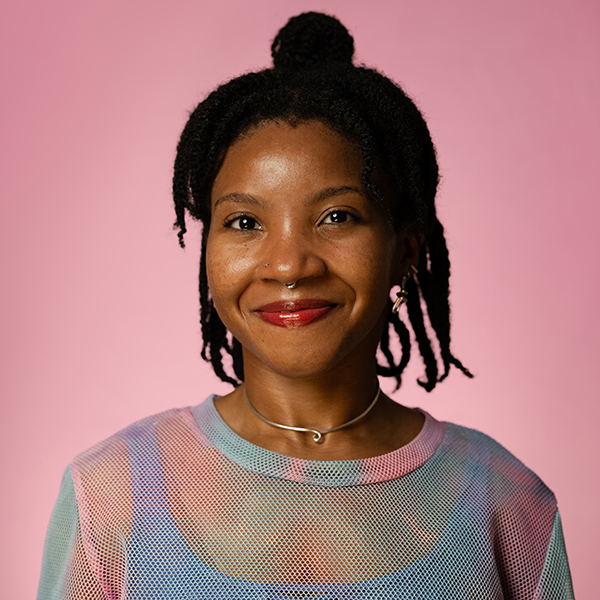Log in or create a free Rosenverse account to watch this video.
Log in Create free account100s of community videos are available to free members. Conference talks are generally available to Gold members.
Summary
At some point in your career, you'll likely have to choose between Senior IC and Design Management roles. The manager's path is clear, and the tradeoffs have been well-considered. But what if you don't want to manage others? What if you'd rather continue as an individual contributor? Will you get bored and find your career stalling out? Or is there an IC role that will help you continue to grow? In this panel, we will hear from Staff and Principal Designers who've managed to stay on the IC track while growing their careers. We'll get into some of the day-to-day nitty-gritty of what it means to be a Staff Designer or Principal Designer, and how to make this role a reality within your organization.
Key Insights
-
•
IC design leadership paths are less formalized and often self-defined compared to management tracks.
-
•
Senior designers act as subject matter experts focusing on one area, while staff designers navigate ambiguity and influence cross-functional teams.
-
•
Principal designers take on broader business impact and strategic initiatives aligned with company goals.
-
•
Growth at senior IC levels requires balancing continued craft excellence with strategic leadership and influence.
-
•
Building influence is key and involves strong communication, relationship-building, and aligning design goals with business and user needs.
-
•
Advocating for new IC leadership roles involves collective action, clear problem statements, competitive research, and trial experiments.
-
•
Company size and maturity heavily impact role definitions and expectations between senior, staff, lead, principal, and management roles.
-
•
Effective staff/principal designers spend time shaping roadmaps, driving vision, and ensuring cross-functional buy-in beyond hands-on design.
-
•
Maintaining and evolving design skills (e.g., mastering Figma auto layout) is important even at senior IC levels to remain effective.
-
•
Creating evergreen documents and storytelling frameworks enables asynchronous influence that extends beyond in-person meetings.
Notable Quotes
"I kind of think of it one as like fields of influence — staff influences the team or pillar, principal influences organization-wide."
"If you’re sitting there thinking I need to build out this project and nobody else is saying the same thing, it means you have to do it, period."
"Levels can mean really different things at different companies, so ask a lot of questions about expectations for each level."
"Building influence has been such a challenging part of growing in my own career. It takes a lot of communication and understanding others’ goals."
"Propose new IC roles like a design problem: identify the need, gather research, and try it as an experiment with retrospectives."
"You don’t have to become a manager or director to advance; becoming a principal IC role is equally influential."
"Staff and principal designers need to balance zooming in on execution and zooming out to define strategic vision and minimize risk."
"Keeping your craft sharp, learning new tools like auto layout in Figma, and challenging yourself help maintain relevance."
"Creating evergreen documents enables asynchronous influence — it’s not about being in the room all the time, it’s about having your voice heard."
"The difference between director and principal often lies in whether you’re inspired more by leading people or focused on outputs and craft."
Or choose a question:















More Videos

"Our shift is structural, not because of personalities — it was needed to influence earlier, more business-centric decisions."
Nalini KotamrajuResearch After UX
March 25, 2024

"Care less about being certain and more about being effective."
Dean BroadleyNot Black Enough to be White
January 8, 2024

"If you’re not doing the work of addressing your own pain, you won’t be effective in helping others."
Denise Jacobs Nancy Douyon Renee Reid Lisa WelchmanInteractive Keynote: Social Change by Design
January 8, 2024

"Our team’s improvement wasn’t the final state—we set ambitious goals to be in the 80th to 90th percentile next year."
Kim Fellman CohenMeasuring the Designer Experience
October 23, 2019

"We mostly have something called a BYOE scenario or bring your own ethics."
George AyeThat Quiet Little Voice: When Design and Ethics Collide
November 16, 2022

"Don’t just think about design systems as an artifact but as a living ecosystem connecting people, tools, and products."
Nathan CurtisBeyond the Toolkit: Spreading a System Across People & Products
June 9, 2016

"Compass is a pretty frank place where people feel safe to speak their minds, even at leadership levels."
Greg PetroffThe Compass Mission
March 10, 2021

"Diverse research teams blend outsider and insider perspectives for authentic cultural translation."
Chloe Amos-EdkinsA Cultural Approach: Research in the Context of Glocalisation
March 27, 2023

"The new site had a 19% dropout rate compared to 32% on the old site, showing clear improvement."
Mackenzie Cockram Sara Branco Cunha Ian FranklinIntegrating Qualitative and Quantitative Research from Discovery to Live
December 16, 2022



















